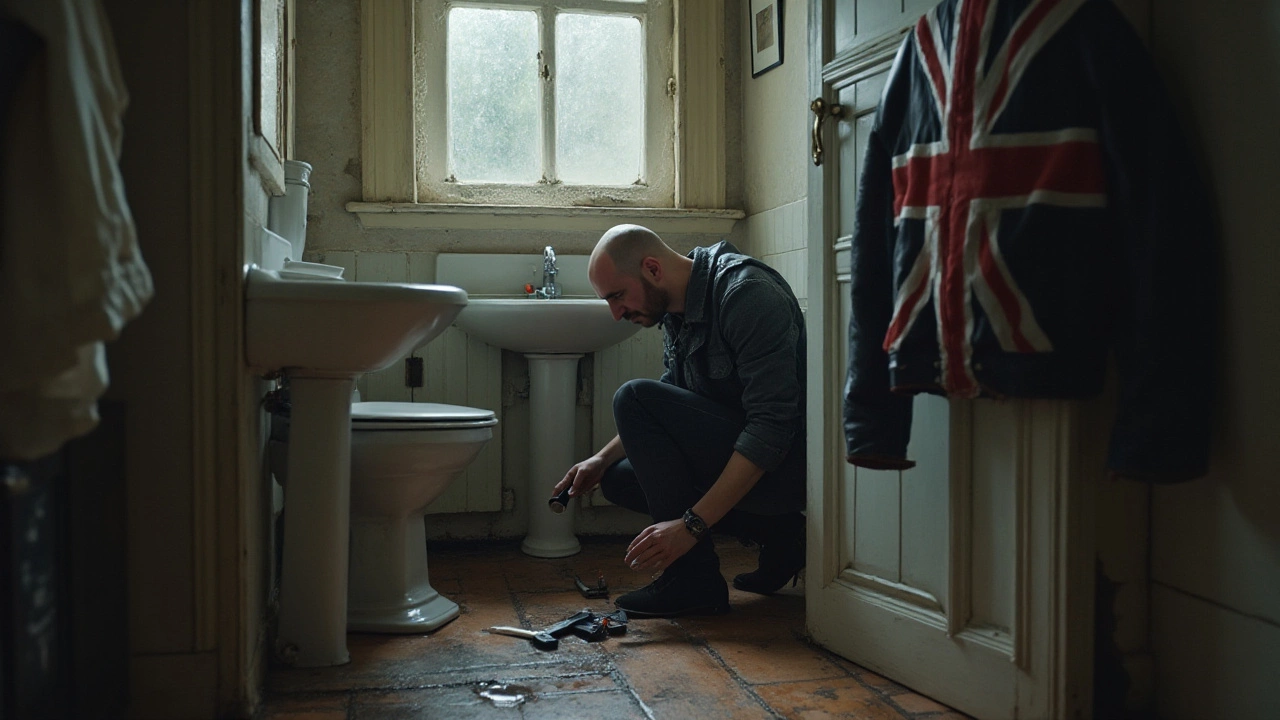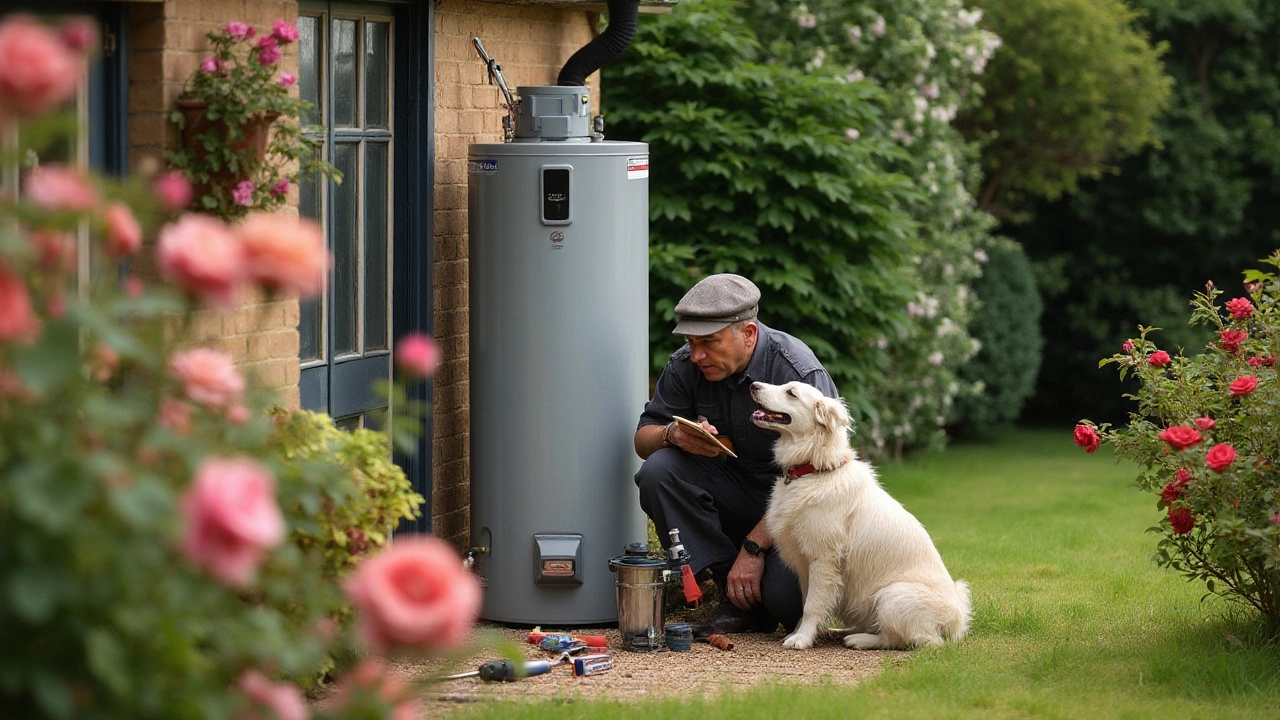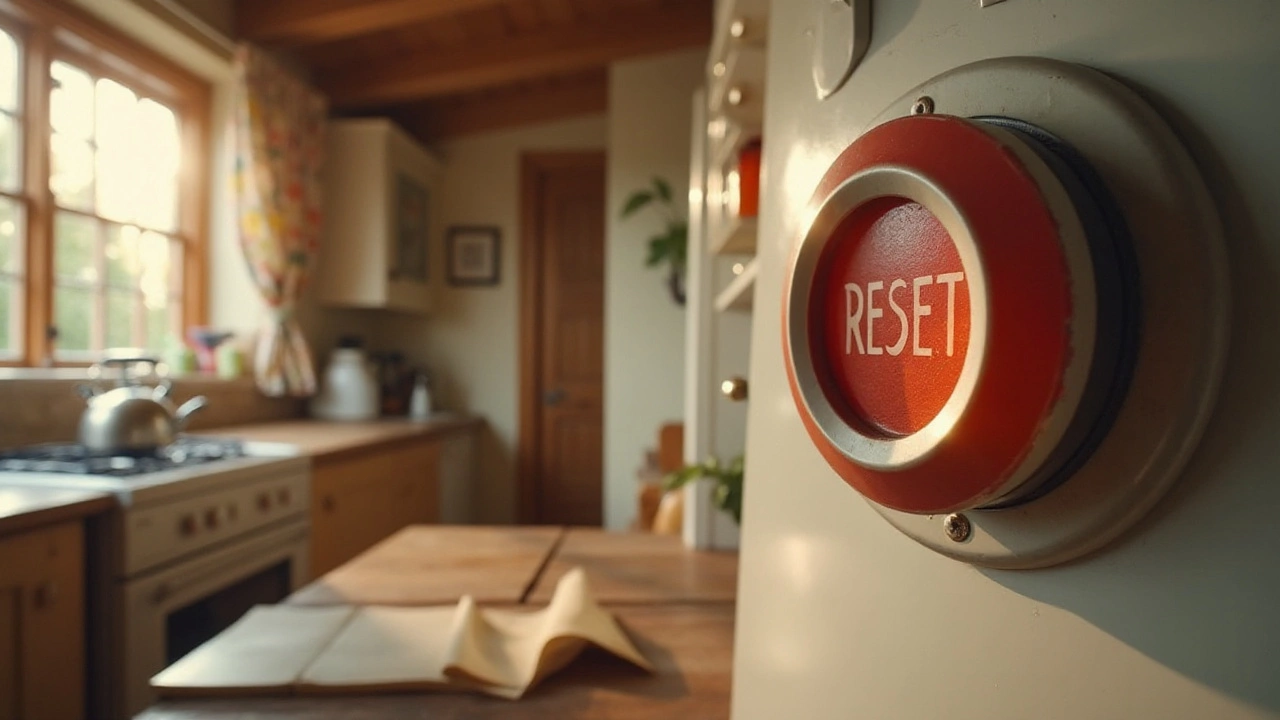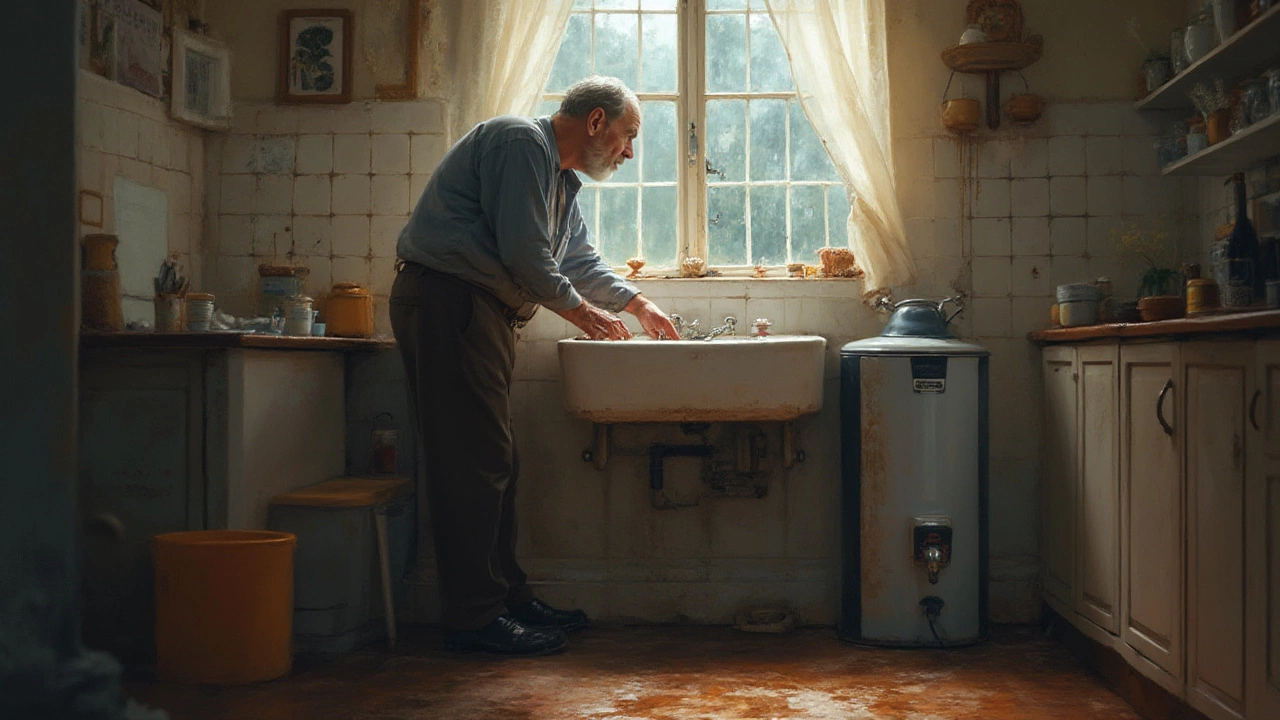
- 5 Sep 2024
- Gideon Thornton
- 0
Picture this: you're ready for a nice, hot shower, but suddenly, it's freezing cold. It's a frustrating scenario that many of us face. So what happened to the hot water? There aren't many things more inconvenient than a sudden loss of hot water, especially when you're not sure where to start troubleshooting.
In this article, we'll explore the typical reasons behind this chilly surprise. Whether it's a gas, electric, or tankless water heater, various factors can disrupt your hot water supply. From pilot light issues to thermostat troubles, we'll dig into the usual suspects. We'll also talk about some do-it-yourself checks you can make before calling in the professionals.
Don’t let a broken water heater ruin your day. Roll up your sleeves, and let’s find out where that hot water went, how to get it back, and what you can do to prevent it from disappearing again.
- Common Causes of Hot Water Loss
- Troubleshooting Your Water Heater
- Simple Fixes for Water Heater Issues
- When to Call a Professional
- Preventive Measures for Consistent Hot Water
Common Causes of Hot Water Loss
It's a scenario no one enjoys: stepping into a cold shower when you were expecting a relaxing, warm experience. Understanding why this hot water issue occurs is the first step to reclaiming the comfort of your home. Often, the problem might seem like it appeared suddenly, but there are usually telltale signs that you might have missed along the way. One of the main offenders is a faulty thermostat. It's like the nerve center of your water heater, regulating the temperature to ensure it's just right for daily use. If it's not functioning properly, you could either scald yourself with boiling water or shock yourself with icy drops, neither of which are particularly pleasant sensations.
Another frequent cause is the pilot light. This is particularly relevant for gas water heaters. The pilot light is a small flame that ignites the gas burner. If it's out, there's no ignition, meaning your heater can't heat water at all. It might go out due to a draft, dirt accumulation, or even an air bubble in the gas line. It's a problem that sounds trivial, but it requires careful attention. According to the Department of Energy, “Regular maintenance of your water heater can prevent pilot light issues, ultimately saving you energy and avoiding significant repair costs.”
“Maintaining your water heater isn’t just about the hot water; it’s about safety and efficiency in the household.” – The U.S. Department of Energy
If your water heater is electric, you might be dealing with a broken heating element. Think of it as the electric coil that warms up in your toaster. When it fails, the water has no option but to stay cold. A multimeter can help diagnose this electrical shortfall; however, working with electricity can be dangerous if you’re not experienced. Moving beyond the mechanics, one often overlooked cause is mineral build-up inside the tank. This sediment can act like an insulator, preventing the water from heating effectively. It happens when hard water, which contains a lot of dissolved minerals, gets heated. These minerals then settle at the bottom of the tank, creating a layer that disrupts the efficiency of the heater.
Understanding these causes in depth helps homeowners gauge whether the problem is something they can manage themselves or if they need to call in a professional. With plumbing tips, you might feel daunted at first, but this deeper knowledge can make a big difference in your confidence and ability to handle small repairs. Here’s another interesting tidbit: according to a 2022 survey, 25% of homeowners reported that they needed a professional to diagnose issues they could have potentially tackled themselves if they had the basic knowledge.
Troubleshooting Your Water Heater
When the comforting warmth of hot water turns unexpectedly arctic, it's time to put on your detective's hat. Troubleshooting a water heater isn't as daunting as it may seem, even if you're not particularly handy. To begin, identify the type of water heater you own; most homes either have a gas or electric model. Each type comes with its own set of common issues. For gas water heaters, the usual suspects are quite straightforward. First, ensure that the pilot light is glowing brightly; if not, relighting it could be your simple fix. Electric water heaters, on the other hand, might suffer from a tripped breaker or a faulty heating element. A preliminary check of your circuit breaker panel can save a call to the repair service if a switch needs a simple reset.
Before diving deeply into the technicalities, grab your user manual. Those few dusty pages contain invaluable insights. If it's missing, fear not, as most manufacturers offer digital copies on their websites. Armed with knowledge, let's consider a few common technical hiccups. Sediment build-up is a silent saboteur in water heaters, creeping in from mineral-rich water and settling over time like a sneaky intruder. This build-up can lead to popping or rumbling noises, indicating your water heater’s need for a good flush. If you're noticing reduced hot water supply, sediment might be the culprit, stealing space from hot water.
Check the Thermostat Settings
An often overlooked aspect of troubleshooting involves the thermostat settings. Many homes suffer from insufficient hot water simply because the thermostat is set too low. A safe recommendation is around 120°F (49°C), but preferences vary. If after adjustment the water remains lukewarm, a faulty thermostat could be to blame. This appliance component wears out over time and may need replacement to restore proper function. Ensure that both thermostats in dual-element heaters are synchronized in their settings for optimal performance.
“We've seen that many homeowners overlook the importance of regularly checking their water heaters, which is a simple task that can prevent many headaches,” says John Hawthorne, a well-respected plumbing expert from 'Home Essentials Magazine'.
Once you've explored these basic fixes, it's worth considering the state of your water heater's anode rod. Suspended in the tank, this metal rod attracts harmful minerals, sparing your tank from corrosion. Over time, these rods degrade, requiring replacement. Without attention, they can lead to rusty water or a leaking tank. Inspecting and replacing it every few years can dramatically lengthen your water heater’s life span.
For statistically minded folks, consider this: a study reported that regular maintenance checks can extend a water heater's life by up to 30%. Understanding the intricacies and typical failure patterns of your heater can ensure its smooth operation and an ample supply of hot water. Keeping tabs on the heater's age can also help; if it's over ten years old, it might be time to start budgeting for a replacement. Remember, with age, efficiency diminishes, and breakdowns become more frequent.

Simple Fixes for Water Heater Issues
Your first step when dealing with a sudden lack of hot water should be to check the power source. For electric water heaters, ensure the unit is connected to a power source and the circuit breaker hasn't tripped. A tripped breaker is an easy fix, just switch it back, and if it continues to trip, this might indicate a deeper issue requiring professional inspection. In the case of gas water heaters, inspect the pilot light. If it's out, relight it according to the manufacturer’s instructions that usually appear on the side of heaters. Sometimes, a draft or even an eerie poltergeist can extinguish the flame, leaving you with icy water. If relighting doesn't work, it’s time to dig deeper.
Another potential culprit is the thermostat on your water heater. Over time, sometimes by sheer coincidence or a minor fault, the thermostat setting can shift. It could be set too low to produce sufficient hot water or faulty and not responding at all. Adjust the thermostat to a higher temperature and carefully observe if it yields any change. The ideal temperature setting is usually around 120 degrees Fahrenheit (about 49 degrees Celsius), as this balances energy efficiency with comfort, and helps reduce any risk of scalding.
Speaking of temperature, it’s worth exploring another common issue: sediment build-up. Mineral deposits can settle at the bottom of the tank, reducing heating efficiency and leading to a lack of hot water. Drain your water heater to flush these sediments out. Start by switching off the power and allowing the water to cool for safety. Then, connect a hose to the drain valve, open it, and let the tank empty. This simple maintenance can sometimes enhance your heater's performance significantly. Besides, it could gently remind you of the need for regular upkeep, a step often overlooked.
When investigating, don't overlook the pressure relief valve. This valve's purpose is to release pressure from the tank and prevent overheating—a crucial component for safe operation. But malfunctions aren’t uncommon, and a leaky valve could result in hot water issues. Testing the valve involves lifting the valve lever, and if water does not flow when you do so, a replacement might be necessary. For those comfortable with diy projects, replacing a pressure valve isn’t too challenging, but always prioritize safety first.
In some instances, the fixes are not entirely under your control. External factors like the water supply temperature, particularly during cold seasons, can affect your heater's ability to warm up water adequately. Insulating your water heater and pipes can improve efficiency by minimizing heat loss. "An energy-efficient home starts with smart insulation choices," advises James Horton, an energy consultant.
"Proper insulation can curb unnecessary energy use and improve overall system performance," he notes.Maintaining consistent hot water means being proactive with your heater while also understanding the subtle signs it might be giving you.
When to Call a Professional
Even if you've mastered the basics of water heater troubleshooting, some situations call for professional help. Knowing when to reach out can save you time, money, and a lot of headaches. If you’re wrestling with a persistent lack of hot water, it might be more than just a minor glitch. A professional can provide assurance and accuracy that a DIY fix might not. This becomes crucial if your water heater is buzzing, leaking, or old enough to be considered a seasoned citizen. Once your trusted heater hits the decade mark, it might be waving a white flag, and only a pro can tell if it’s time for repair or replacement.
When it comes to dealing with gas-related issues, calling in experts is essential. Handling gas is not only risky but also requires precision tools and trained hands. Sputtering pilot lights and gas odor surrounding the heater can signal gas leaks—a severe hazard you don’t want to battle alone. Here, professional plumbing services are not just helpful, but a necessity. A skilled technician will check for gas leaks and correctly address them to ensure your safety.
If you've noticed a sudden increase in rust-colored water or noises coming from the tank, it’s another red flag. This could mean corrosion inside the tank or sediment build-up causing internal damage, both of which aren't casually fixable with a wrench and a good YouTube tutorial. You truly need a skilled hand to carefully and effectively handle what might be a challenging repair. Reliable professionals not only fix but also inspect and suggest long-term solutions, such as enhanced water softeners, to prevent future troubles.
Consider professionals your go-to for intricate wiring and electrical concerns, too. An electric water heater repair involves knowledge of electrical systems which, if incorrectly handled, can lead to injury or fire. This task is complex, requiring a licensed electrician or plumber with specialized training and certifications. Fixing electric thermostats, one-third of the complex triad that controls temperature, needs more than a keen interest—it demands expertise.
According to the Water Heater Contractors of America, 'Over 50% of water heater malfunctions occur from DIY attempts gone wrong.'As tempting as it might be to try out your hand at a DIY repair, it’s important to weigh the benefits against the risks. While minor issues might be easy to address, more severe problems should prompt an immediate call to a professional. One good rule of thumb is if you feel uneasy or uncertain, trust the experts. Not only will they bring your elusive hot water back, but they’ll do so safely and efficiently, potentially saving you from a bigger, unexpected expense later on.
It's worth considering maintenance check-ups for consistent operation and peace of mind. Experts examine everything—from pressure valves to heating elements—ensuring your unit runs idealy and any precursors to a breakdown are handled in its infancy. So next time, when even the most basic attempts seem useless and you’re not just dealing with a slight hot water problem—pick up the phone and call someone skilled. Not all problems call for professional intervention, but for those that do, it's better to be safe than sorry.

Preventive Measures for Consistent Hot Water
Maintaining a steady flow of hot water should be an essential part of your home routine, not just something that crosses your mind when the shower turns icy. Regular maintenance of your water heater can prevent unexpected disruptions, saving both time and money in the long run. Sediment build-up in tanks is a common issue which often leads to reduced efficiency and can sometimes cause serious damage if neglected. Flushing your tank every six months helps clear this sediment and extends the life of your water heater.
Insulating your water heater and pipes is a simple yet effective method to prevent heat loss, ensuring that hot water reaches your faucet swifter, reducing waste and energy costs. Pipe insulation is usually an inexpensive investment but can lead to significant savings on your energy bill. Additionally, setting the right temperature on your thermostat is crucial. Keeping it at around 120-125 degrees Fahrenheit is considered optimal; it’s hot enough to prevent bacteria such as Legionella, yet safe enough to prevent scalding.
Another important aspect of prevention is regular inspections by professionals, especially for older units. Routine checks can help spot trouble before it escalates, keeping your water heater repair needs to a minimum. As noted by the U.S. Department of Energy, “Proper maintenance will significantly extend the life of a water heater.”
“Maintenance plays a significant role in the durability and efficient function of the home's utilities, underscoring its importance,” writes the Department of Energy.Lastly, it's wise to plan for the future. Most water heaters have a lifespan of around 8-12 years, so if your heater is past its prime, consider replacing it before it fails. Newer models are more energy-efficient, which can help offset the upfront cost over time.
Checklist for Ongoing Maintenance
Consistency is the key to preventing issues. Here’s a handy checklist you can follow to ensure your water heater remains in top shape:- Flush the water heater tank every 6 months to remove sediment.
- Check the anode rod every year and replace it if necessary.
- Insulate pipes to minimize heat loss.
- Inspect temperature settings annually.
- Schedule annual professional inspections, especially for units over 5 years old.




